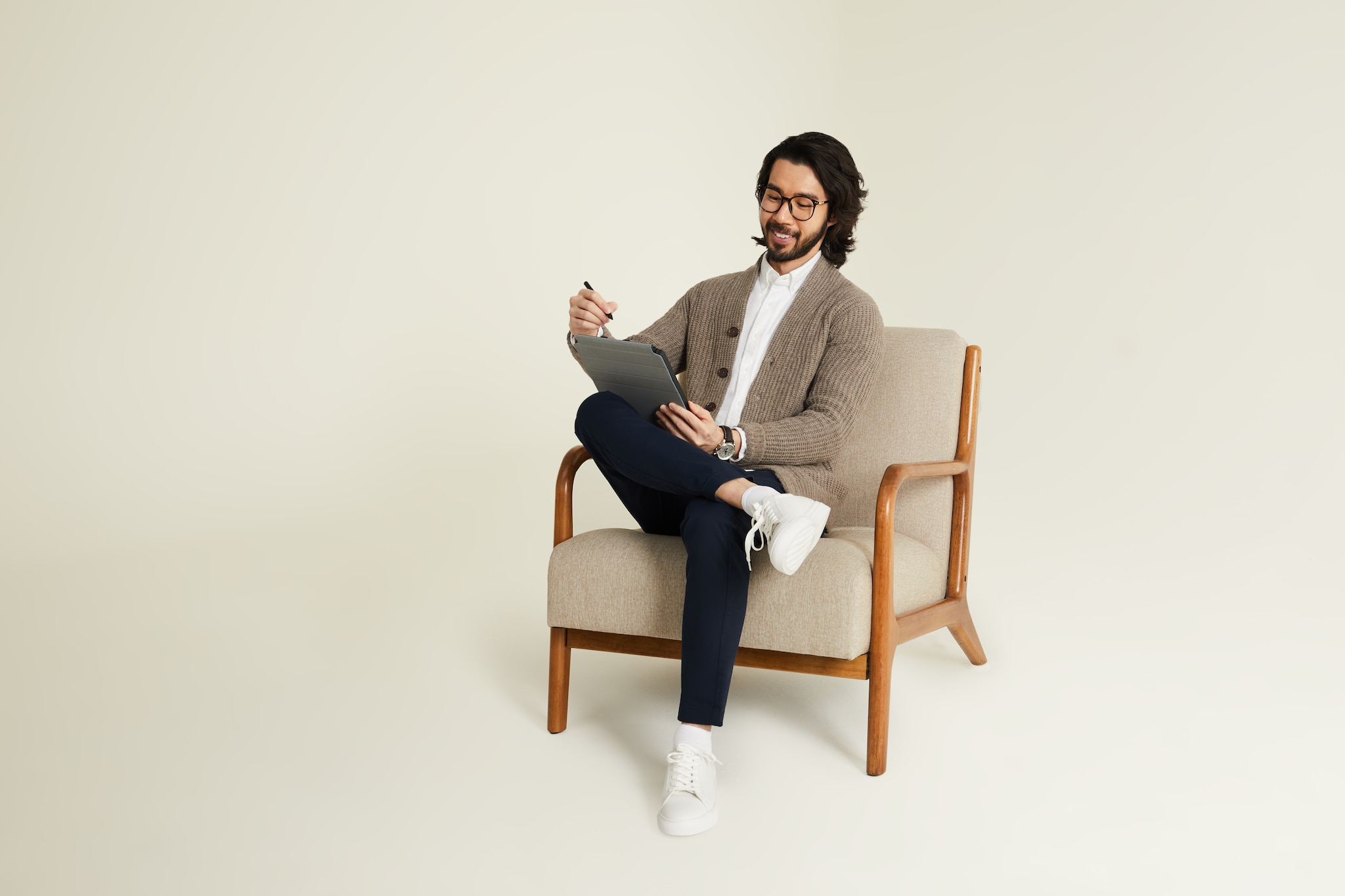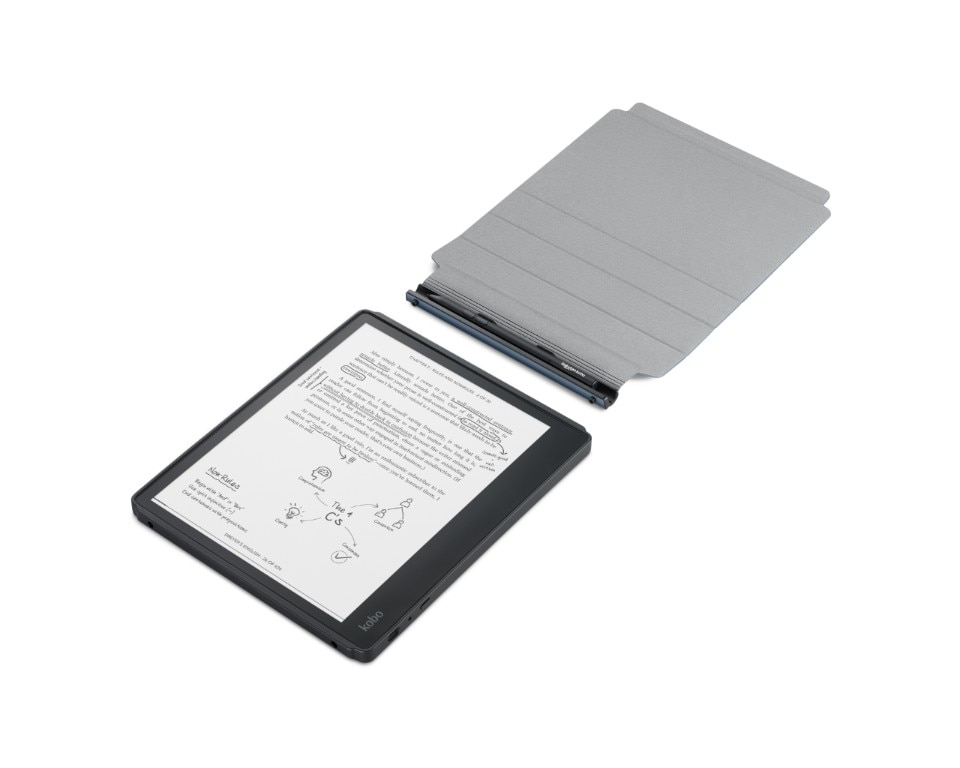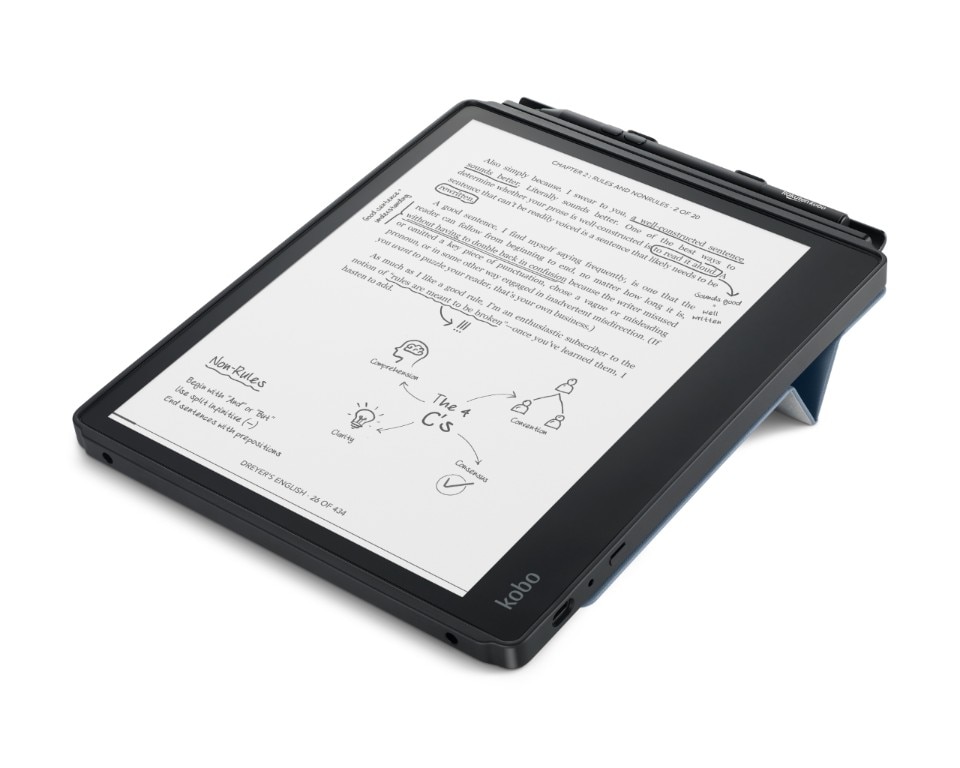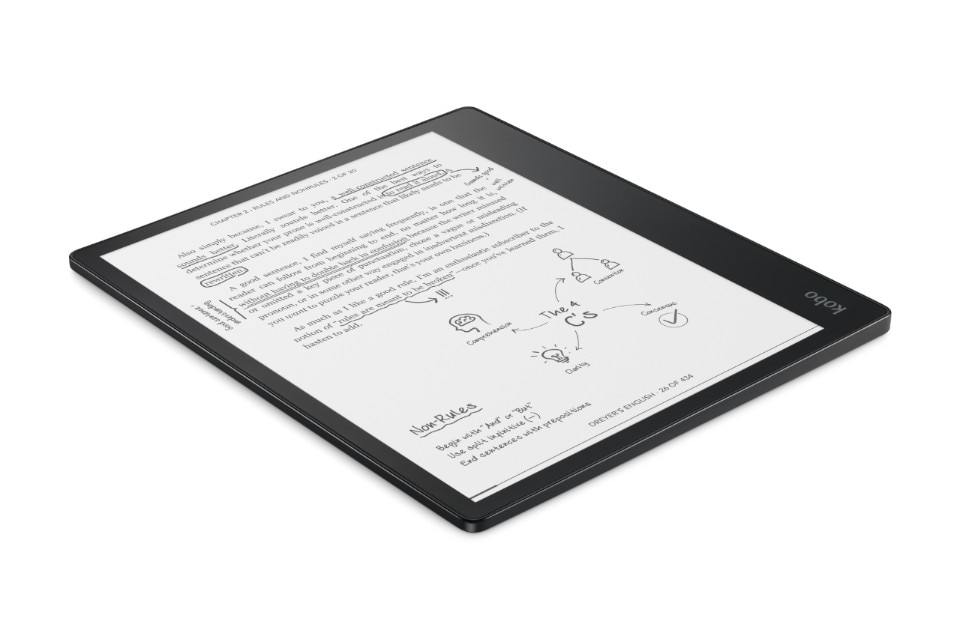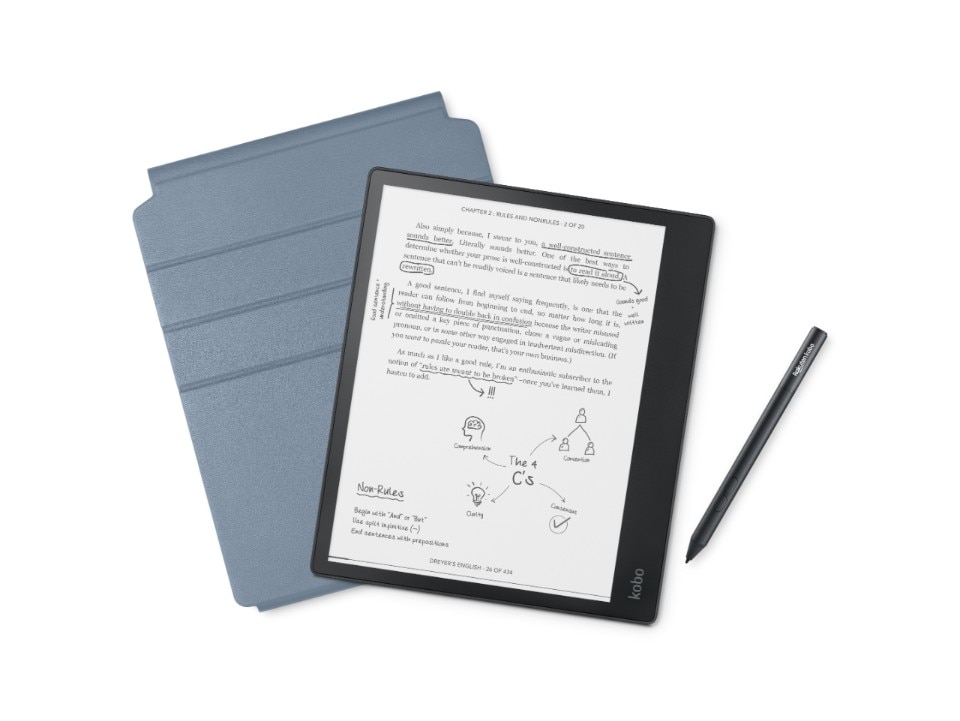Kobo is a Toronto-based company that for over ten years has been focusing on digital reading. Its name comes from the anagram of “book”. In the second half of 2021 Kobo has introduced three new ereaders to its catalouge, bringing a margin of innovation within this sector as it had not been done for a long time. Their key features include a bigger screen, the integration of audio, and the introduction of the stylo. The latter accessory has suddenly changed the perception we had thus far matured of ereaders as somehow “passive” tools. With these models Kobo now is the richest ereader manufacturer on the market, offering six devices that range from the 6” of the Nia to the 10.3” of the Elipsa.
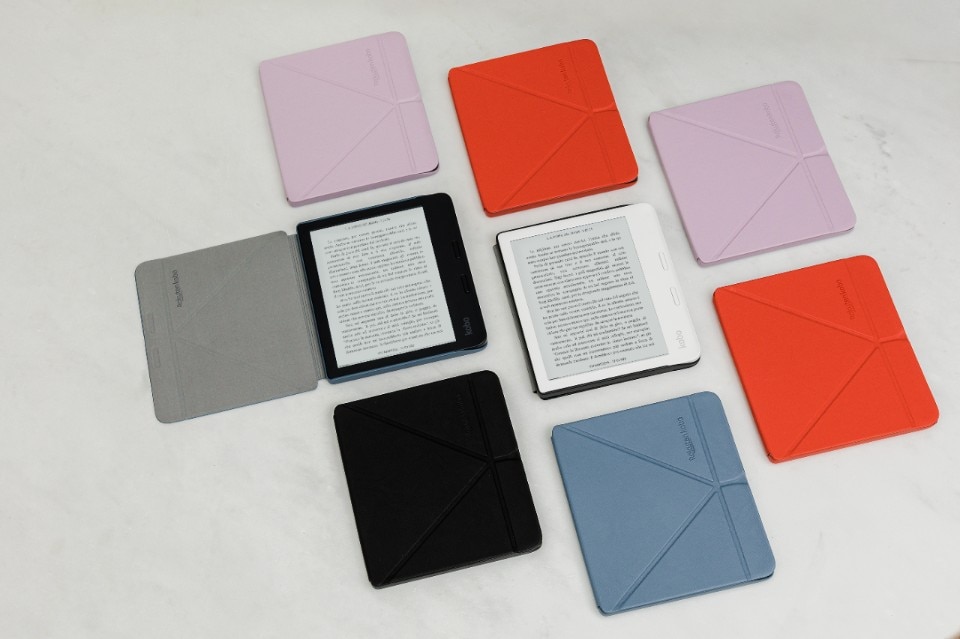
“Our product strategy is establishing a conversation with those who have books at the core of their lives”, explains Michael Tamblyn, the Ceo of Kobo,who highlights the link between the introduction of the new devices and their functions with the needs voiced by the community of readers - to this day Kobo boasts about 58 million active users in the world. “If we can overcome a barrier, or introduce a function that unlocks a new reading mode, that’s something great for us”, he explains, stressing the importance of dialogue and analysis when projecting new devices and features.
A monthly plan to read as much as you like
I meet with Tamblyn in Milan, on a rainy day. He looks suave, and we sit talking separated by a plexiglass barrier. The reason for his visit is the launch of Kobo Plus, a monthly subscription program that allows you to access a vast library of titles. “We understood that some people wouldn’t buy ebooks because they are too expensive for them,” comments the Ceo. It’s the case of those readers who borrow the books from libraries or who download them illegally. “We conducted a research on BitTorrent to see what books they were looking for,” he adds. This model, he claims, was tailored purposely for them. But not only: it’s also the current market trend. “All the media categories are shifting towards a monthly fee that allows you to consume what you prefer”. It is the case of Netflix, Spotify, and of the XBox’s Game Pass.
All the media categories are shifting towards a monthly fee that allows you to consume what you prefer
At first launched in the Netherlands, Kobo Plus is now being extended to all those countries where it has been possible to secure an agreement with the publishing houses. “There are great benefits: you focus less on bestsellers and you have more freedom of choice: old books, new books, fictions, essays”.
.jpg.foto.rmedium.jpg)
The pandemic has changed our reading habits
Tamblyn’s visit to Milan is also the occasion to discuss the impact of the pandemic on the consumption of ebooks. “The pandemic has been a catalyst for reading”, says the Ceo, underlining that over a period of nine months Kobo registered an increase in users otherwise expected over the next three years. It was in Lombardy where during the lockdown a trial scheme in partnership with the government for the distribution of free ebooks was launched. “It was such an interesting program that we decided to extend it to all those countries where lockdown was introduced”. It was a fruitful move. “We knew that by staying at home people would develop new habits, so we wanted to make sure that reading was one of them”. The best way to do so was by giving a book. “Those people have then stayed on the platform, becoming regular users.” After all, official market reports show that the lockdown resulted in a solid increase in the sale of ebooks, as many people had more time to dedicate to reading and book shops were closed. In the United States alone ebooks sold 191 million copies, one fifth of the entire book market.The trend, then, didn’t stop, although in the summer there have been some signs of a slow down.

According to Tamblyn, electronic books don’t necessarily replace physical ones. There are books that are nice as objects: photography books, cooking books, titles you want to keep in your house and in your life. However, the parent who gives a children's book to their kid, an object that is beautiful to physically gift, then will be likely to read a thriller on Kobo, “and he’ll feel perfectly at ease in both worlds”. The rise of ebooks, despite what one may think, actually benefits traditional books too. “Book design has drastically improved over the last ten years, because if publishers want books to keep existing, also as a gift, they know they have to make books that are also beautiful”.
Our product strategy is establishing a conversation with those who have books at the core of their lives
Ebooks aren’t only fiction
There still are many people who read from their phones. Those who buy an ereader, though, decide to do so because they create “a concentration island”, as Tamblyn defines it, and have no distractions. “There are no social media alerts, your boss can’t send you an email and there are no texts popping up”. They allow you to reach that level of isolation and focus that in these times we now consider precious. “Add a stylo and you’ll get the perfect vehicle for thinking and exploring”.
Yes, the stylo. Despite it now being a common feature on tables and on many laptops, it represents a step forward for ereaders. kobo introduced it with Elipsa, the A4 size ereader we already wrote about here. Also this tool, explains Tamblyn, has been the outcome of a research process. “We noticed that ebooks were mostly read for narrative, and we wanted to understand why.” So, a period of debate with those who read essays, with students, with people who work in education or those who read for business purposes followed. The main answer, adds Tamblyn, is that these kinds of people “have a dynamic relationship with books”: they don’t just read, they take notes, they underline words, and write along the margins. And, often, they work using A4 documents. That’s how Elipsa was born. “For us, it was important that it wasn’t simply a notepad, but a device for readers.” The challenge, still open, is the improvement of the process of taking notes while reading, and to adapt them to different font sizes, for instance. Improving their use as digital notepads, though, is also another point made by the Ceo. “We set up a team dedicated to this experience, which is new to us. News and upgrades will come”.
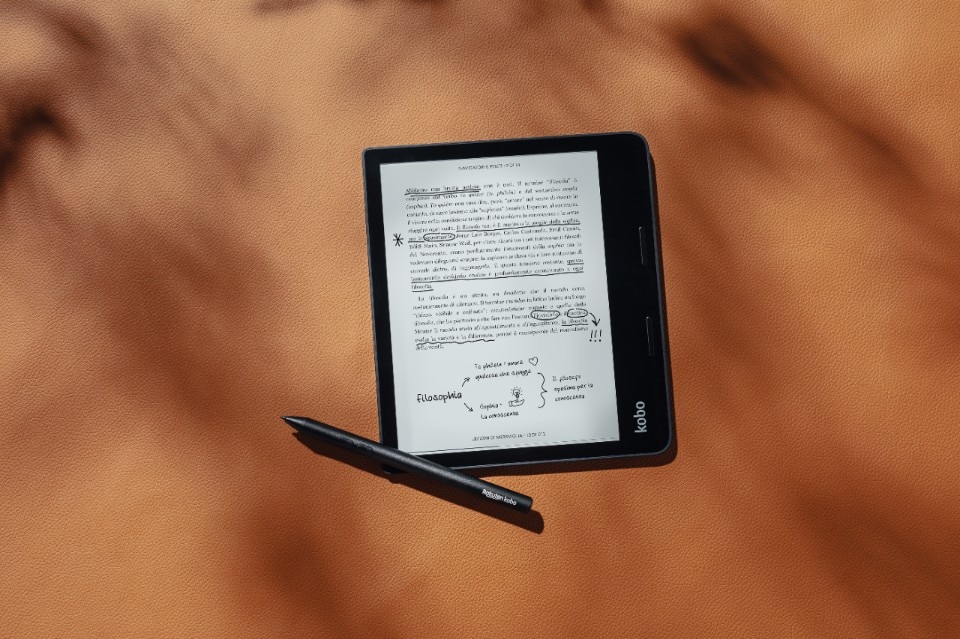
On the example set by Elipsa, followed Sage, a slightly smaller ereader – still boasting a 8” screen – “born out of the concept of that notebook you always carry around”. Sage marks the return, albeit upgraded, of Forma, another Kobo classic that, according to Tamblyn, featured the best form factor ever made for an ereader. Compared to its predecessor, Sage adds the compatibility with the stylo, a longer-lasting battery and more storage. This latter feature is essential to another key element of Kobo’s strategy: audiobooks – which, needless to say, take up way more space than ebooks.
The rise of audiobooks
“We read in function to our time. For instance, you cannot read when driving. It’s difficult to read when doing the washing up. Audiobooks allow books to take up more of your available time”, with these words Michael Tambyln sums up the value of a product that for decades has been popular in North America and in the United Kingdom, less so in Europe. According to the Ceo of Kobo, though, now something is changing, mostly because publishers have begun to look at what works in other markets.
“We discovered that the world of audiobook listeners is split in two”, tells me Tamblyn: one one hand those who consider them part of their listening activity, together with music and podcasts – who therefore use the Kobo app on their tablets or smartphones. “On the other, those who conceive audiobooks as part of their readings”. This ignited the decision of making audiobooks an integral part of three of the new Kobo ereaders, which can also connect to bluetooth headphones or speakers; and to offer a version of Kobo Plus also inclusive of audiobooks.
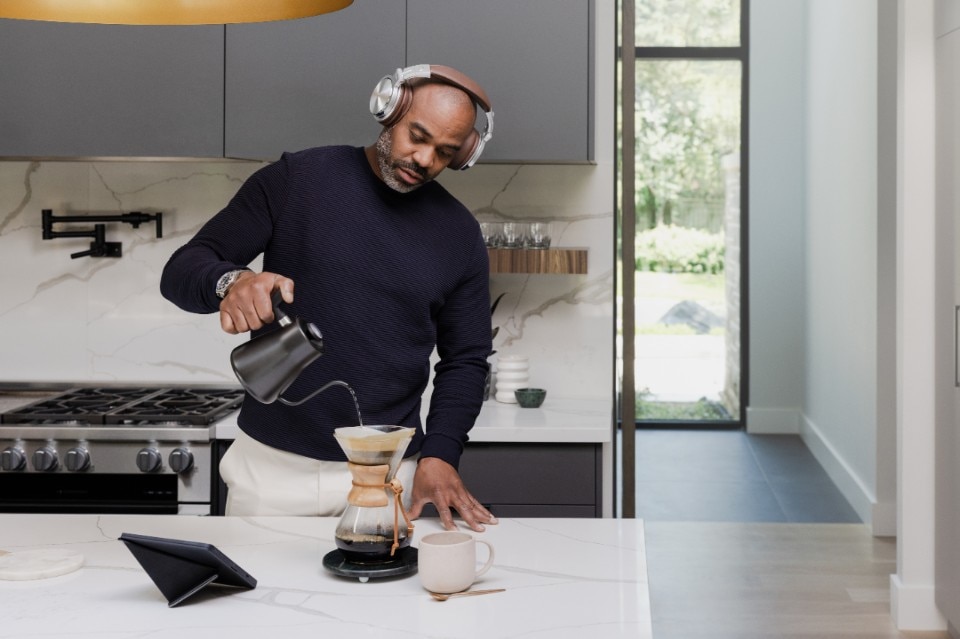
When I question what the company’s next moves are going to be, Tamblyn dodges with the same old-fashioned charm that charaterises his persona, pointing out that the ebook’s is a highly competitive market, and that the Kobo’s philosophy is based on the dialogue with its users rather than on the abstract, long-term planning of new features. “Usually, the development time for a new device sits around 18 months”, he explains.
We then talk about the origami covers, a design gem enabling users to read both vertically and horizontally, lying in bed as much as sitting on a plane. That is an example of Kobo’s mission: finding new design solutions expanding the possibility of reading.
“It is fascinating for us, considering that books have been existing in their format for so long. There haven’t been many innovations in the field of books over the last two-hundred years”. Before saying goodbye, Tamblyn confesses how lucky he considers himself for working in the world of books and reading. “We shall not persuade people to read books, they already love to do so. What we do is simply make it a better experience”.




